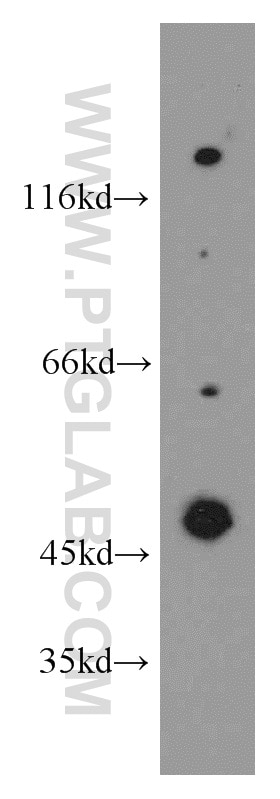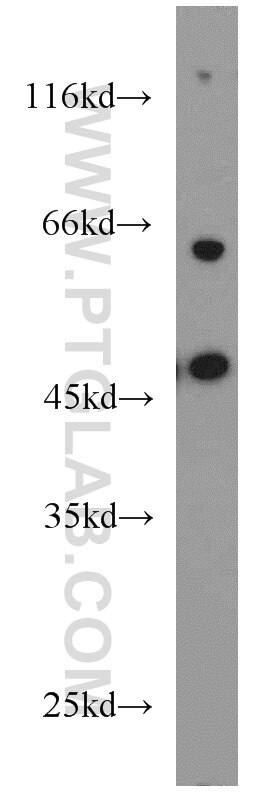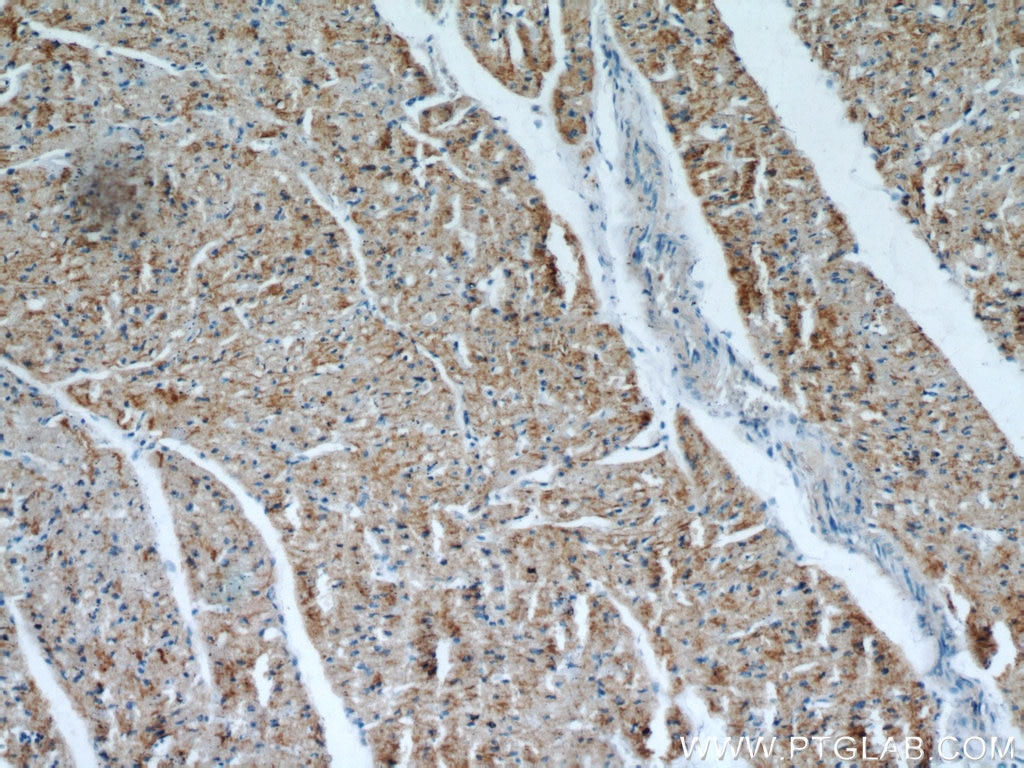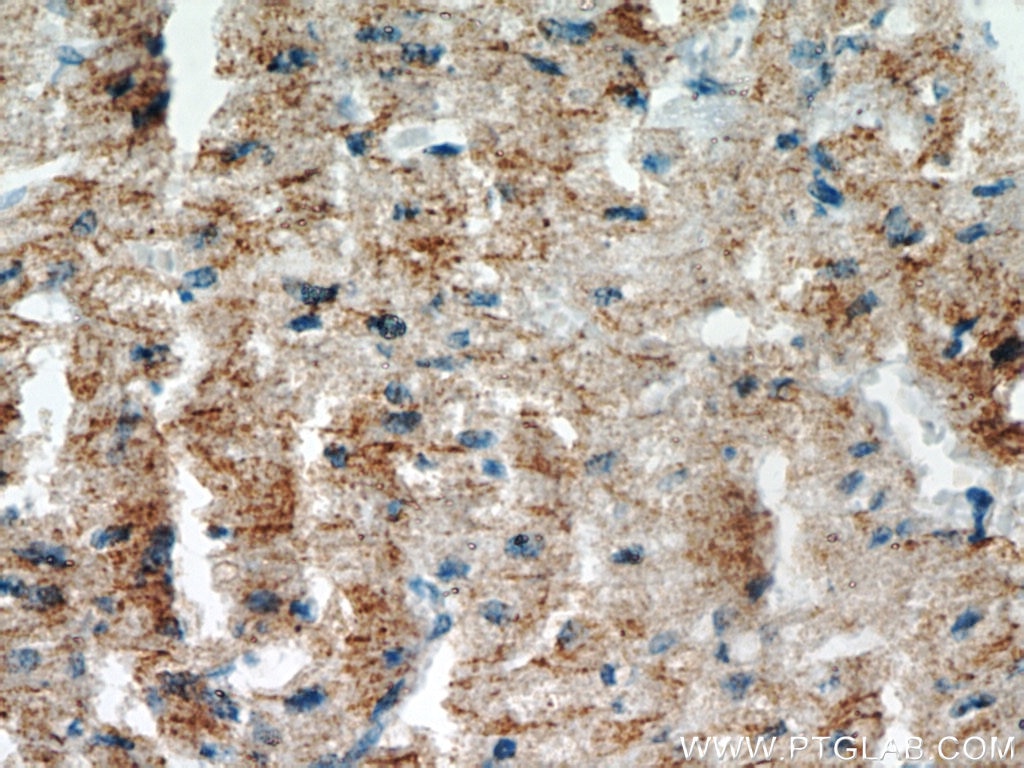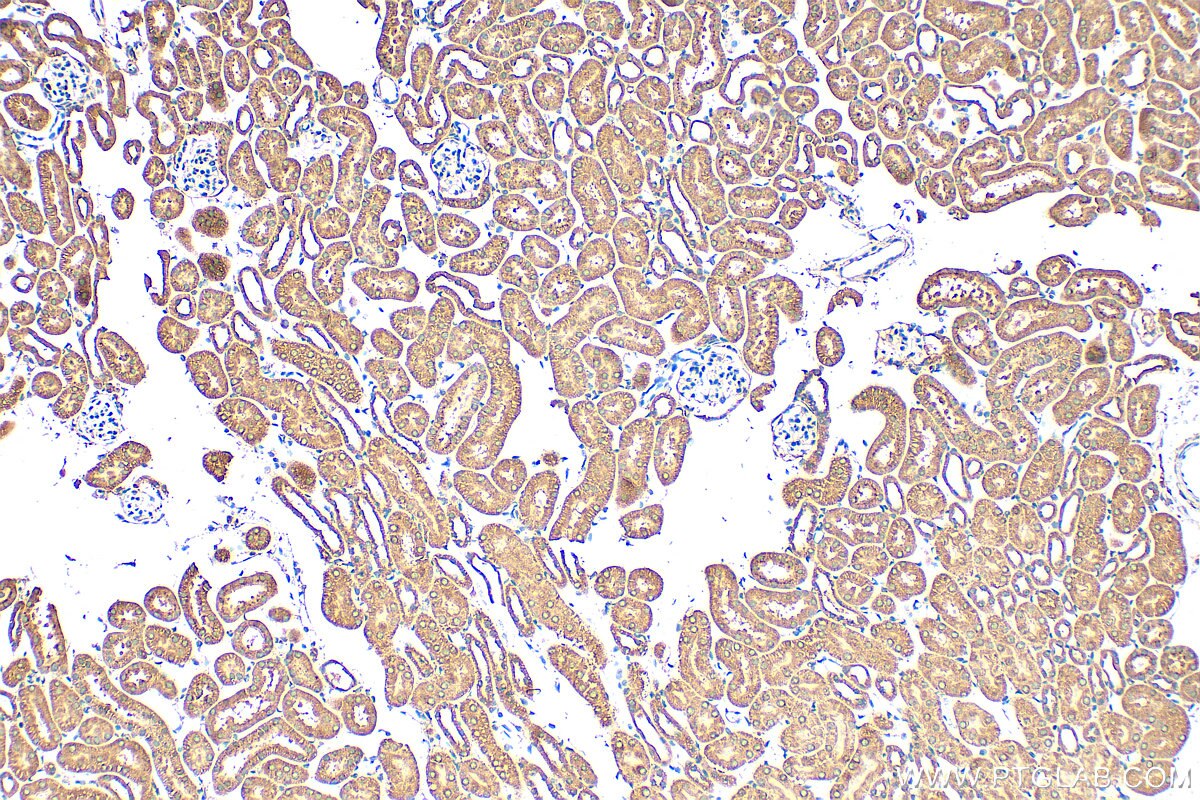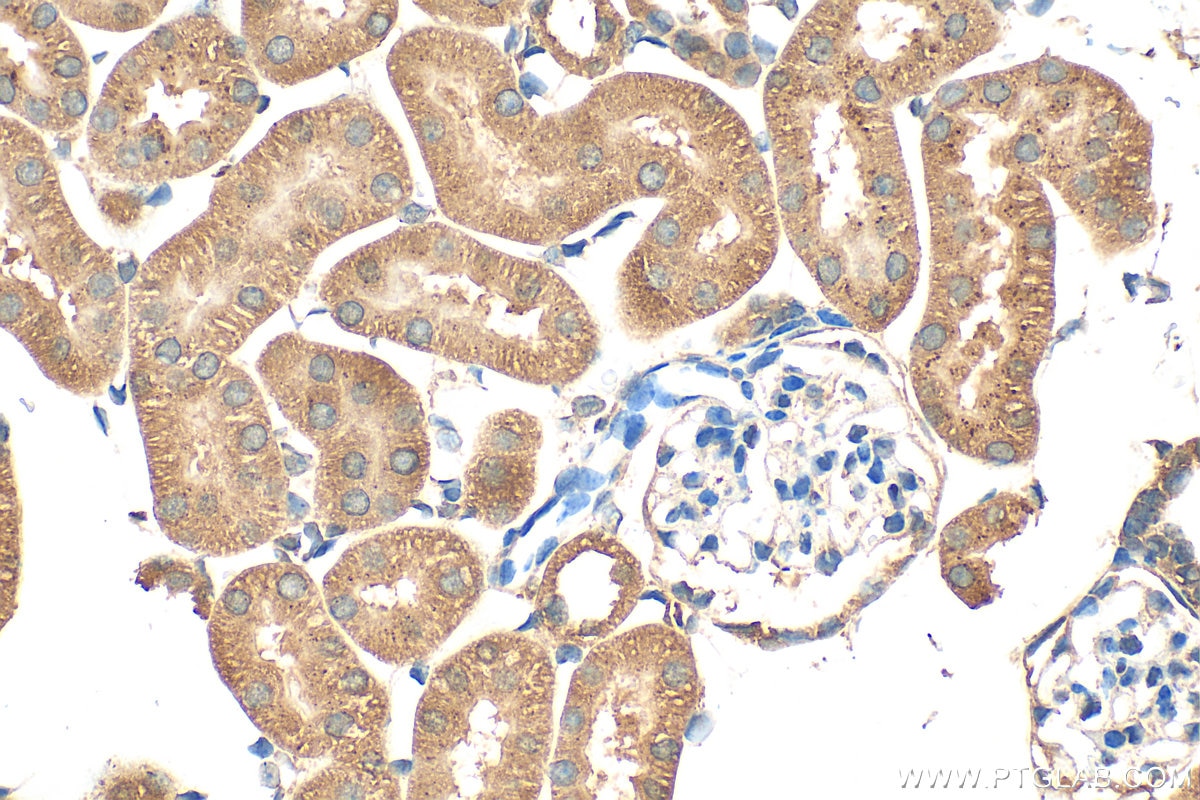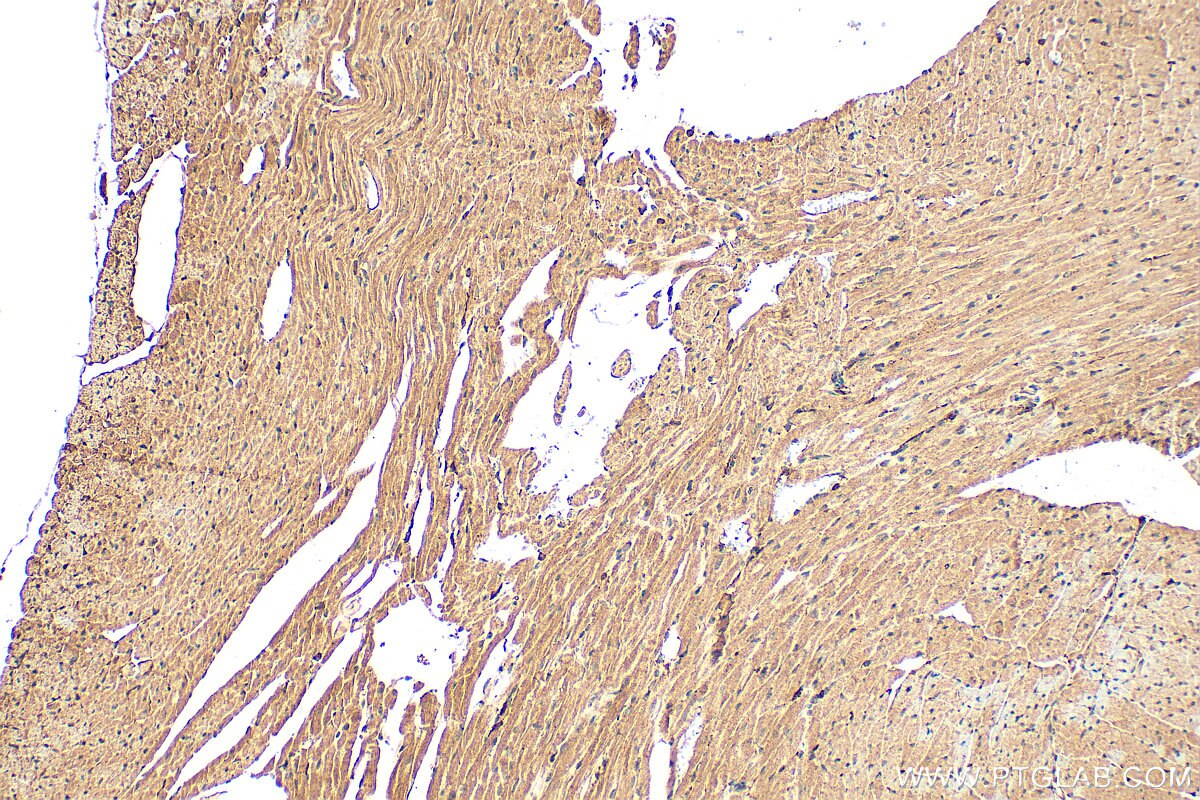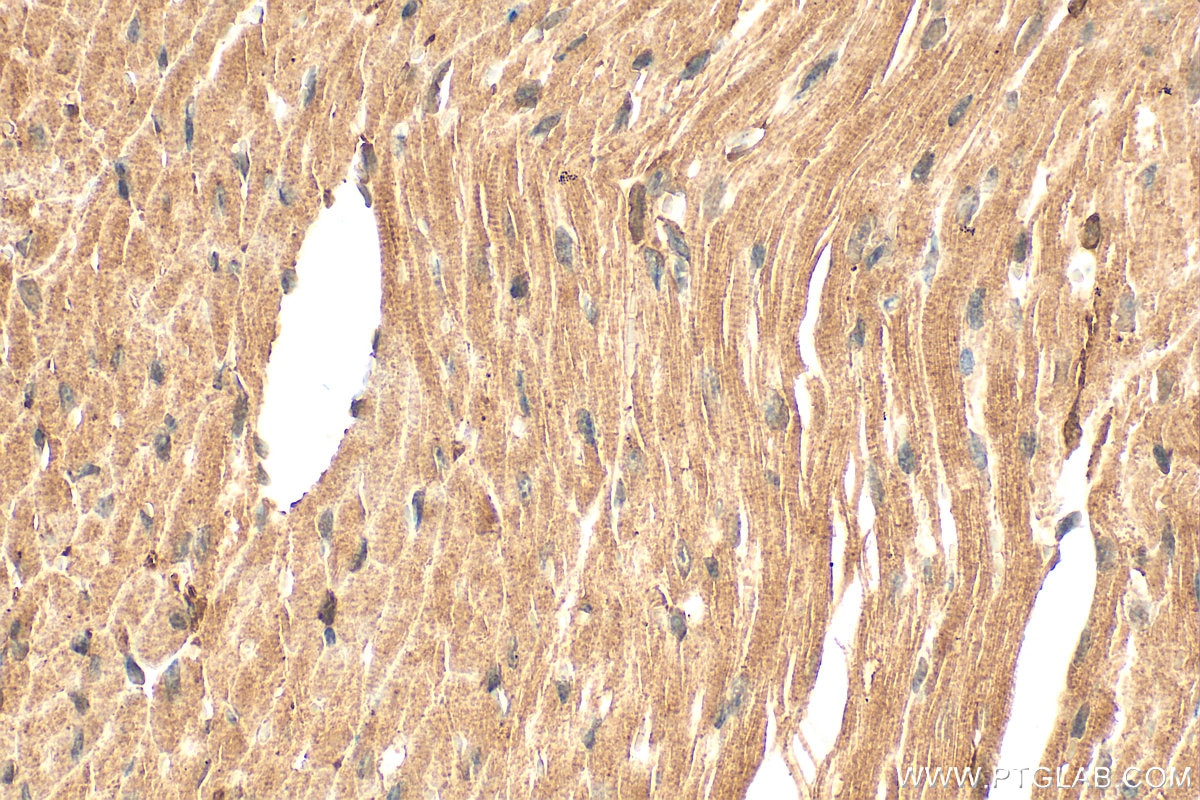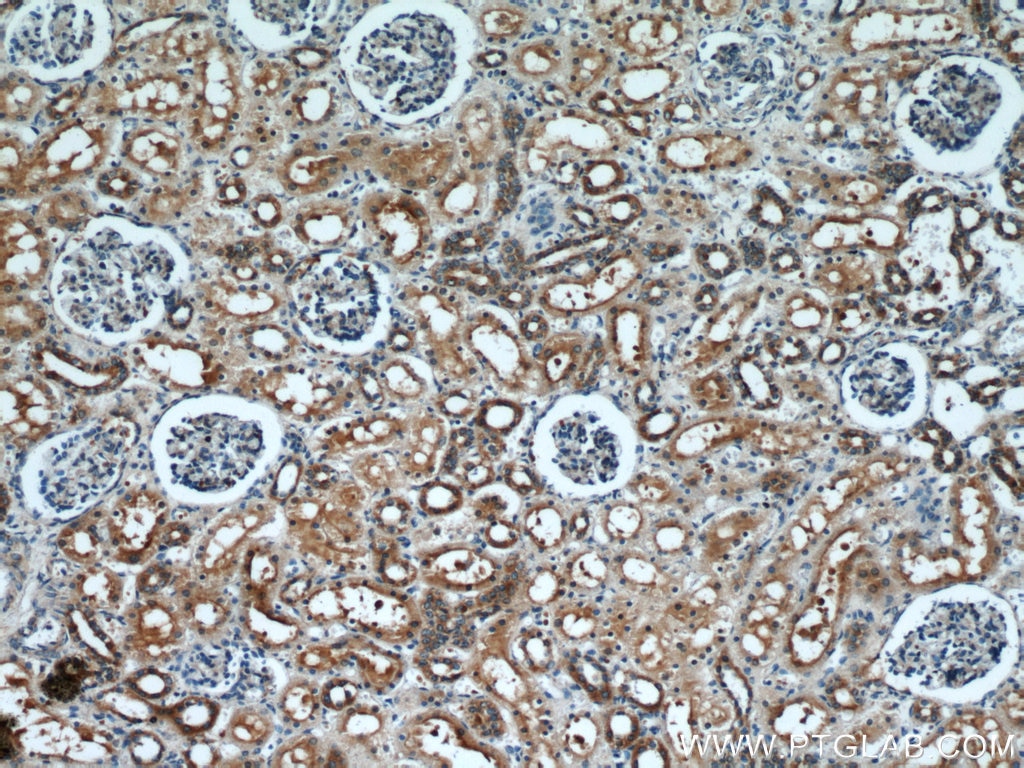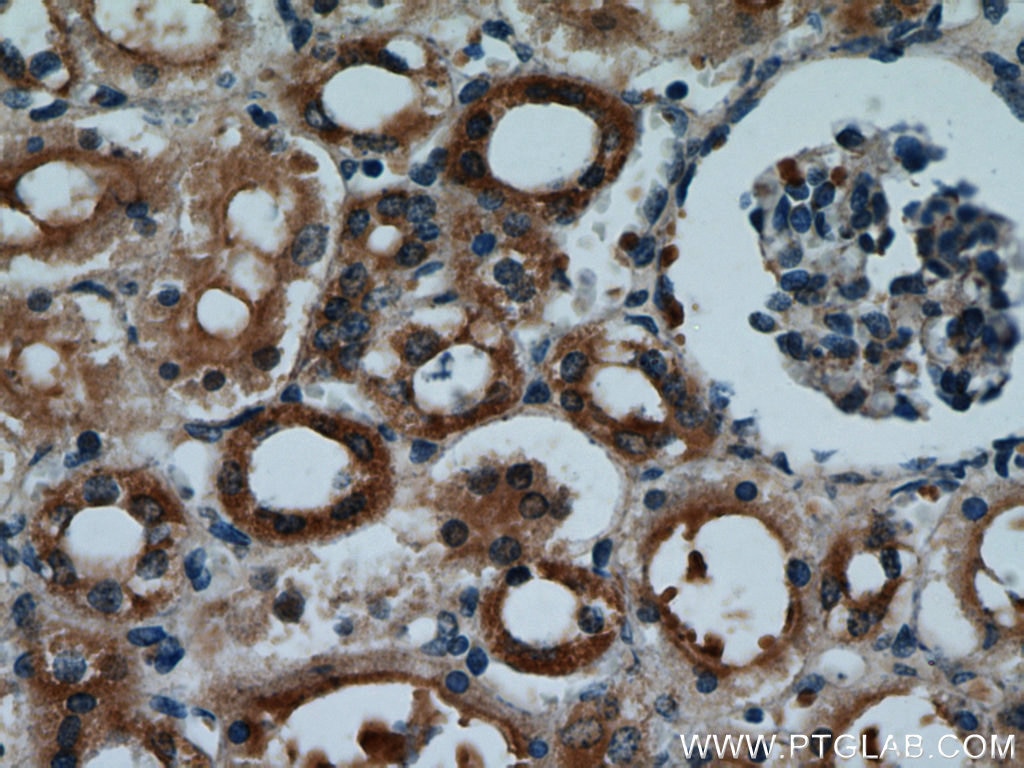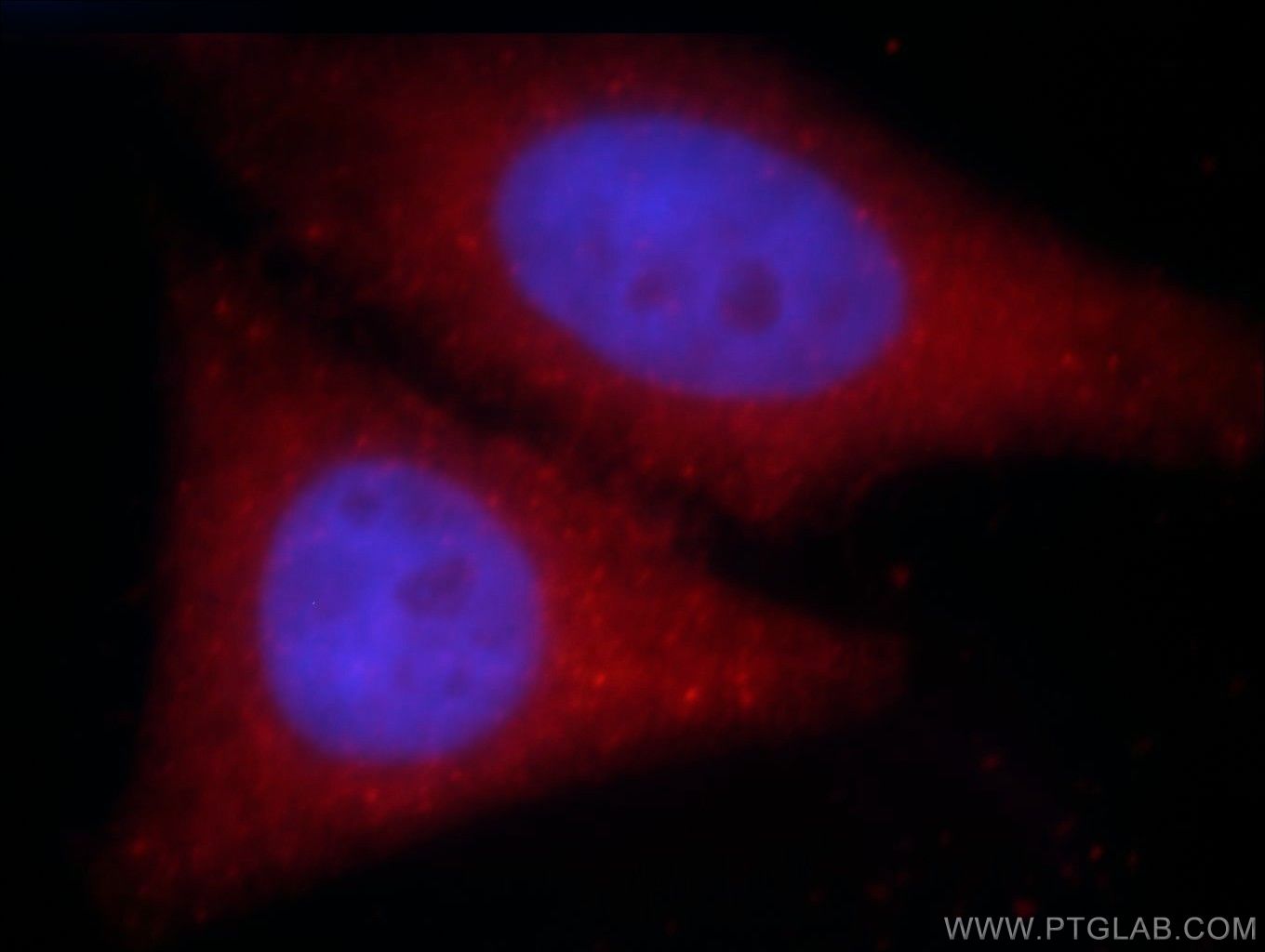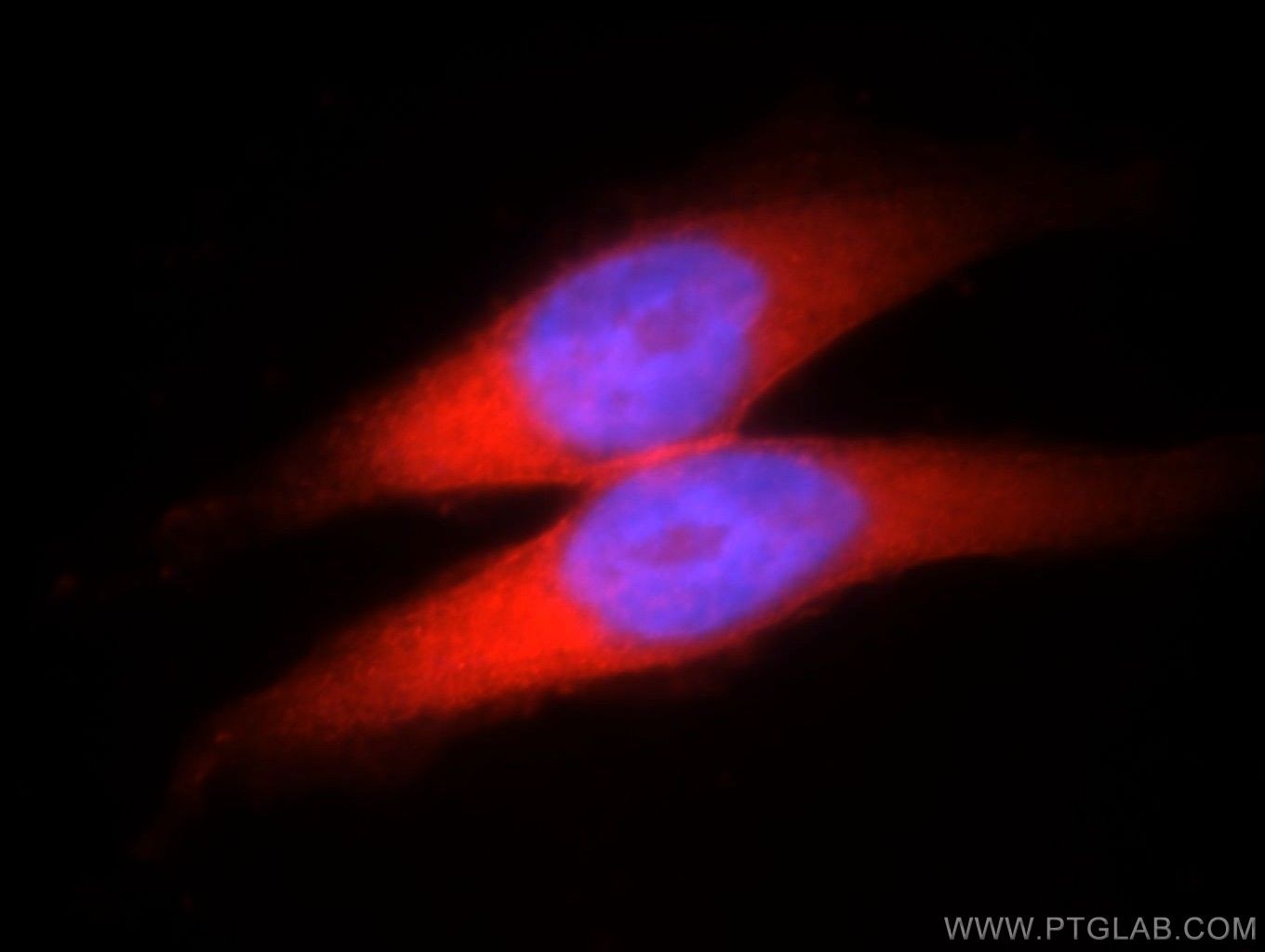SH3D19 Polyklonaler Antikörper
SH3D19 Polyklonal Antikörper für WB, IHC, IF/ICC, ELISA
Wirt / Isotyp
Kaninchen / IgG
Getestete Reaktivität
human, Maus, Ratte
Anwendung
WB, IHC, IF/ICC, ELISA
Konjugation
Unkonjugiert
Kat-Nr. : 21499-1-AP
Synonyme
Geprüfte Anwendungen
| Erfolgreiche Detektion in WB | HT-1080.Zellen, Y79-Zellen |
| Erfolgreiche Detektion in IHC | Mausherzgewebe, humanes Herzgewebe, humanes Nierengewebe, Mausnierengewebe Hinweis: Antigendemaskierung mit TE-Puffer pH 9,0 empfohlen. (*) Wahlweise kann die Antigendemaskierung auch mit Citratpuffer pH 6,0 erfolgen. |
| Erfolgreiche Detektion in IF/ICC | HepG2-Zellen, HeLa-Zellen |
Empfohlene Verdünnung
| Anwendung | Verdünnung |
|---|---|
| Western Blot (WB) | WB : 1:500-1:2000 |
| Immunhistochemie (IHC) | IHC : 1:200-1:800 |
| Immunfluoreszenz (IF)/ICC | IF/ICC : 1:10-1:100 |
| It is recommended that this reagent should be titrated in each testing system to obtain optimal results. | |
| Sample-dependent, check data in validation data gallery | |
Produktinformation
21499-1-AP bindet in WB, IHC, IF/ICC, ELISA SH3D19 und zeigt Reaktivität mit human, Maus, Ratten
| Getestete Reaktivität | human, Maus, Ratte |
| Wirt / Isotyp | Kaninchen / IgG |
| Klonalität | Polyklonal |
| Typ | Antikörper |
| Immunogen | SH3D19 fusion protein Ag15915 |
| Vollständiger Name | SH3 domain containing 19 |
| Berechnetes Molekulargewicht | 790 aa, 87 kDa |
| Beobachtetes Molekulargewicht | 45-47 kDa |
| GenBank-Zugangsnummer | BC108890 |
| Gene symbol | SH3D19 |
| Gene ID (NCBI) | 152503 |
| Konjugation | Unkonjugiert |
| Form | Liquid |
| Reinigungsmethode | Antigen-Affinitätsreinigung |
| Lagerungspuffer | PBS with 0.02% sodium azide and 50% glycerol |
| Lagerungsbedingungen | Bei -20°C lagern. Nach dem Versand ein Jahr lang stabil Aliquotieren ist bei -20oC Lagerung nicht notwendig. 20ul Größen enthalten 0,1% BSA. |
Hintergrundinformationen
SH3D19, also known as EBP, Eve-1, encodes a multiple SH3 domain-containing protein. SH3D19 plays a role in regulating A disintegrin and metalloproteases (ADAMs) in the signaling of EGFR-ligand shedding. SH3D19 is involved in the suppression of Ras-induced cellular transformation and Ras-mediated activation of ELK1(PMID: 14551139). SH3D19 is abundantly expressed in skeletal muscle and heart(PMID: 15280379).
Protokolle
| PRODUKTSPEZIFISCHE PROTOKOLLE | |
|---|---|
| WB protocol for SH3D19 antibody 21499-1-AP | Protokoll herunterladen |
| IHC protocol for SH3D19 antibody 21499-1-AP | Protokoll herunterladenl |
| IF protocol for SH3D19 antibody 21499-1-AP | Protokoll herunterladen |
| STANDARD-PROTOKOLLE | |
|---|---|
| Klicken Sie hier, um unsere Standardprotokolle anzuzeigen |
